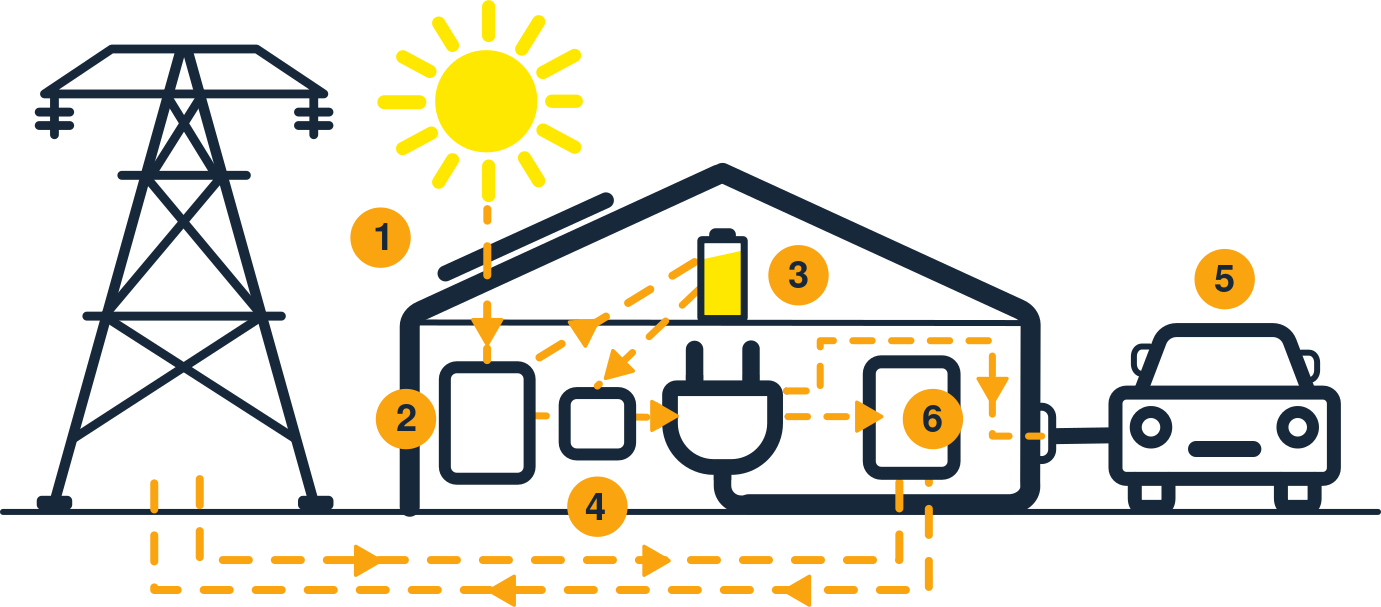



As the world grapples with the urgent need to combat climate change, the intersection of solar energy and electric vehicles (EVs) offers a compelling solution: solar EV chargers.
These innovative devices integrate the power of the sun with electric mobility, creating a sustainable and efficient charging infrastructure that paves the way for a greener future.
Solar EV chargers combine two key elements: solar photovoltaic (PV) panels and electric vehicle charging stations. The PV panels capture sunlight and convert it into electricity, which is then used to charge EVs. By directly harnessing solar energy, these chargers eliminate the need for electricity from the grid, significantly reducing greenhouse gas emissions associated with charging EVs.
The advantages of solar EV chargers are multifaceted. First and foremost, they promote clean energy generation and reduce carbon emissions. As EVs become more prevalent on the roads, charging them with solar energy ensures a zero-emission charging process, leading to a substantial decrease in the overall carbon footprint of transportation.
Another notable benefit is energy independence. Solar EV chargers can be installed in remote areas or locations with limited access to the grid, allowing EV owners to charge their vehicles using clean energy sources independently. This resilience is particularly valuable during natural disasters or emergencies when conventional power infrastructure might be compromised.
Moreover, solar EV chargers offer a cost-effective charging solution over the long term. While the initial investment for installing solar panels and charging stations may be higher than traditional charging infrastructure, the ongoing operational costs are significantly reduced due to free solar energy. As solar technology advances and becomes more affordable, the overall cost of solar EV chargers is expected to decrease further.
Furthermore, solar EV chargers contribute to grid stability. By distributing energy generation across various charging stations, they alleviate the strain on the electrical grid, reducing the likelihood of blackouts during peak charging periods.
However, challenges remain for the widespread adoption of solar EV chargers. The efficiency and capacity of PV panels, energy storage solutions to handle periods of low sunlight, and optimizing the integration of solar charging with existing grid infrastructure are some of the areas that require further research and innovation.
In conclusion, solar EV chargers hold great promise in accelerating the transition to sustainable transportation. Combining the renewable energy potential of solar PV with the increasing popularity of electric vehicles, these chargers offer a pathway to reduce greenhouse gas emissions, promote energy independence, and create a more resilient and efficient charging infrastructure. As technology progresses and investments in renewable energy grow, solar EV chargers are set to revolutionize the way we charge our vehicles and drive toward a cleaner, greener future.
Solar4Good brings a wealth of experience with a team of seasoned EV charger installers dedicated to EV charger installations. Our experts stay abreast of the latest industry trends and standards, ensuring meticulous attention to detail and flawless execution tailored to your unique requirements.
At Solar4Good, we understand that one size doesn’t fit all. That’s why we offer various EV charger options and configurations, allowing you to customize your charging solution to match your home or business needs perfectly. From residential setups to commercial installations, we have you covered.
When you partner with Solar4Good, you can rest assured of reliability. We collaborate with leading manufacturers to source top-quality components for our installations, ensuring robust and dependable EV charger systems that stand the test of time.
Transparency is at the core of our EV charger installation company business ethos. Solar4Good prides itself on offering competitive and transparent pricing, providing exceptional value without compromising quality or service. You’ll know exactly what you’re getting and paying for with us.
Your satisfaction is our priority. Solar4Good is committed to delivering an exceptional customer experience from start to finish. Our dedicated team is here to guide you through every step of the process, offering expert advice, personalized solutions, and ongoing support to ensure your complete satisfaction.
You’re positively impacting the environment by choosing Solar4Good, one of the best EV installation companies. Our commitment to sustainability means that your charging solution is convenient and eco-friendly, helping reduce your carbon footprint and contribute to a greener future.
Solar4Good stays ahead of the curve with creative solutions and cutting-edge technologies in EV charger charging. We continuously explore new advancements to provide you with the most efficient and future-proof installations available.
With Solar4Good, peace of mind comes standard. Our comprehensive approach ensures that your EV charger charging needs are met with precision and professionalism, giving you the confidence to power ahead with confidence.

To Provide You The Best Solar Experience










Solar panel installation refers to the process of placing solar panels on a residential or commercial property to harness sunlight and convert it into electricity. It involves mounting the panels on rooftops, carports, or ground-mounted structures by our EV charger installers.
Solar panels contain photovoltaic (PV) cells that convert sunlight into direct current (DC) electricity. The panels comprise multiple PV cells, which generate an electric current when exposed to sunlight. An inverter then converts the DC electricity into alternating current (AC), which is used to power electrical devices in your home or business.
Most homes are suitable for solar panel installation, provided they have access to sunlight. Ideally, your roof or property should have a south-facing orientation with minimal shading. However, solar panels can still be installed on east- or west-facing roofs, although they may produce slightly less electricity.
The cost of solar panels can vary depending on factors such as the size of the system, the type of panels used, and the complexity of the installation. Generally, the cost includes the price of the panels, inverters, mounting equipment, installation labor, and any necessary permits. It’s best to obtain quotes from multiple solar installers to get an accurate estimate for your specific situation.
Solar panels are designed to be durable and long-lasting. Most panels come with a warranty that guarantees their performance for 20 to 25 years. However, solar panels can continue to produce electricity well beyond their warranty period, with many lasting 30 years or more.
Solar panels can still generate electricity on cloudy or rainy days, although their output will be reduced compared to sunny days. While direct sunlight is ideal, solar panels can still produce significant power in diffused or indirect sunlight. Additionally, excess electricity generated during sunny days can be stored in batteries or fed back into the grid for later use.
While it’s technically possible to install solar panels yourself, it is generally recommended to hire a professional solar installer. Solar panel installation involves electrical work, knowledge of building codes and permits, and proper system design to maximize efficiency. A professional installer will ensure the panels are safely and correctly installed, comply with regulations, and may also assist with paperwork and permits.
Yes, solar panels can significantly reduce your electricity bills. By generating your own electricity, you rely less on the grid for power, resulting in lower monthly bills. The exact savings will depend on factors such as your energy consumption, the size of the solar system, and local electricity rates. In some cases, you may even generate excess electricity, which can be credited or sold back to your utility company.
Yes, there are various financial incentives available for solar panel installations in many countries. These incentives can include tax credits, rebates, grants, and net metering programs. It’s advisable to research and consult with a local solar installer or energy authority to understand the incentives and subsidies available in your area.
Yes, it is often possible to add more solar panels to an existing system in the future. This depends on the design and capacity of your current system and the available space for additional panels. It’s best to consult EV charger installation companies to assess the feasibility and compatibility. feasibility and compatibility.

©2023 This website is the property of Solar4Good UK Ltd. The content of this website and the information contained therein informs the user of the services provided by Solar4Good UK.